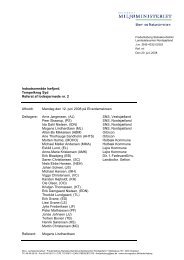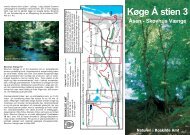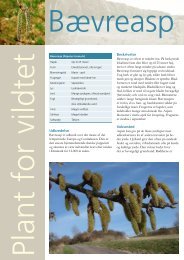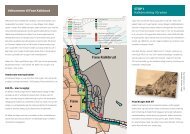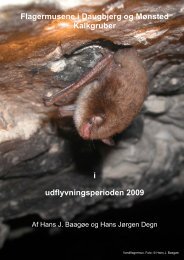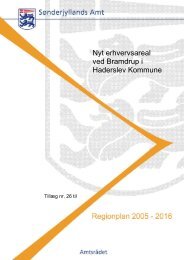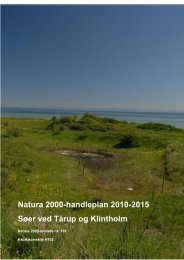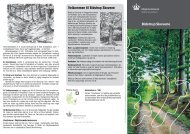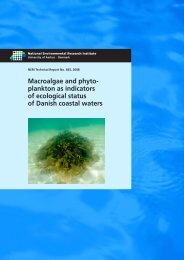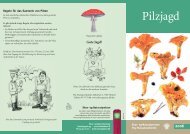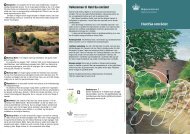Naturoplevelser- en undersøgelse af udvalgte ... - Naturstyrelsen
Naturoplevelser- en undersøgelse af udvalgte ... - Naturstyrelsen
Naturoplevelser- en undersøgelse af udvalgte ... - Naturstyrelsen
You also want an ePaper? Increase the reach of your titles
YUMPU automatically turns print PDFs into web optimized ePapers that Google loves.
Abstract<br />
In D<strong>en</strong>mark, there is an increased focus on disabled people having the same possibilities as the rest<br />
of the population. In the public debate the focus are primary at the accessibility and slowly the focus<br />
has change from urban-accessibility towards access to nature and the outdoor recreation. There is<br />
still no regards on the disabled people’s prefer<strong>en</strong>ces ev<strong>en</strong> though they, through their disability, are<br />
limited in their possibilities, and therefore cannot choose freely. The consequ<strong>en</strong>ce is that they can<br />
only experi<strong>en</strong>ces what are made accessible, no matter what they prefer.<br />
The project is focusing on four groups of disabled; hearing-impaired, de<strong>af</strong>, sight-impaired and<br />
wheelchair users. We want to, develop a method to classify their nature experi<strong>en</strong>ces, to record the<br />
prefer<strong>en</strong>ces of their nature experi<strong>en</strong>ce and to construct a model, which calculates the most valuable<br />
path under the prefer<strong>en</strong>ces.<br />
The prefer<strong>en</strong>ces of the focus groups are recorded from a survey. In the questionnaires the<br />
respond<strong>en</strong>ts have to prioritise their five s<strong>en</strong>ses and for each s<strong>en</strong>se prioritise a list of impressions.<br />
The model is constructed in a geographical information system and tested in a specific case area.<br />
There has be<strong>en</strong> made an analysis of the existing paths, which examined the biological- and<br />
experi<strong>en</strong>ce based values. The model calculates the best path betwe<strong>en</strong> to waypoints according to the<br />
experi<strong>en</strong>ce value of each segm<strong>en</strong>t. The experi<strong>en</strong>ce value is a combination of the prefer<strong>en</strong>ces and the<br />
cont<strong>en</strong>t of the segm<strong>en</strong>ts.<br />
The model showed that the prefer<strong>en</strong>ces have an influ<strong>en</strong>ce on the groups’ choice of path. The model<br />
was tested through three differ<strong>en</strong>t sc<strong>en</strong>arios and it was found useful. There were no significant<br />
differ<strong>en</strong>ce betwe<strong>en</strong> the preferred paths of the focus groups in each sc<strong>en</strong>ario, but there are notable<br />
differ<strong>en</strong>ces in-betwe<strong>en</strong> the sc<strong>en</strong>arios. There are only returned 18 questionnaires which are too few<br />
to make firm conclusions, but the study indicates some t<strong>en</strong>d<strong>en</strong>cies which should be researched in a<br />
more thoroughgoing survey. The four focus groups do agree much in their priorities. The most<br />
valued s<strong>en</strong>se are the sight and for each s<strong>en</strong>ses is it the impressions found in the nature types,<br />
“forest” and “water”. By comparing the results of the project with the demands required by the<br />
disabled on accessibility, is it possible to classify nature experi<strong>en</strong>ce in relation to accessibilities and<br />
experi<strong>en</strong>ce value.<br />
Keywords: Disabled, Prefer<strong>en</strong>ce, Outdoor-recreation, GIS modelling, Cost-weighted-distance, Survey<br />
3



